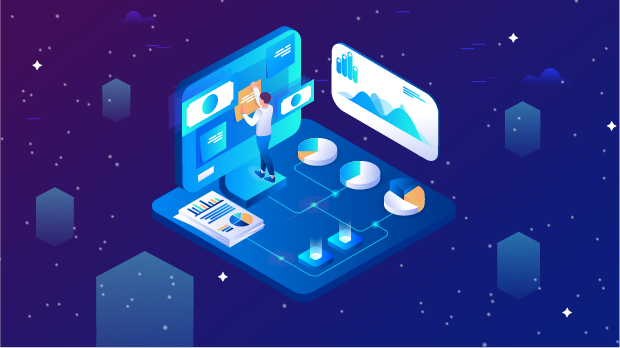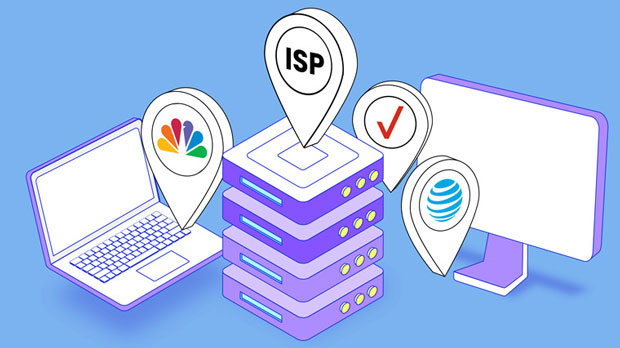In the digital age, online anonymity, security, and privacy have become increasingly important. As businesses and individuals navigate through the ever-growing number of websites, maintaining privacy and staying undetected is crucial. One of the tools that have gained prominence in this field is residential proxies. But why should you consider buying residential proxies, and what makes them a valuable tool for both personal and business use? In this article, we will explore the reasons behind purchasing residential proxies, their distinct advantages, and how they can improve your online experience. What Are Residential Proxies?Residential proxies are IP addresses provided by Internet Service Providers (ISPs) to homeowners. These IP addresses are tied to real physical locations and are often used to route internet traffic from a user to a website. When compared to datacenter proxies, which are often flagged and identified as proxies, residential proxies are harder to detect because they mimic normal internet usage. These proxies give users a high degree of anonymity, and they are especially valuable for people or businesses who need to conduct web scraping, data mining, or online browsing without revealing their identity or location.Advantages of Residential Proxies1. Enhanced Privacy and AnonymityThe most significant advantage of using residential proxies is the enhanced privacy and anonymity they provide. When browsing the internet through a residential proxy, your real IP address is hidden, making it difficult for websites to track your online activities. This is crucial for protecting personal information from hackers, advertisers, or any entity that might want to invade your privacy. Additionally, residential proxies allow you to surf the web without revealing your physical location, ensuring that your browsing habits remain private.2. Avoiding IP Blocks and BansOne common issue when performing tasks like web scraping, accessing restricted content, or even conducting business-related research is encountering IP blocks or bans. Websites and platforms often monitor and block suspicious or high-frequency traffic coming from the same IP address. Residential proxies help you avoid these issues by rotating between multiple real IP addresses. As a result, your online activity is spread across different IP addresses, making it harder for websites to identify your behavior as suspicious. This means you can conduct tasks like scraping and testing without worrying about getting blocked.3. Improved Geolocation TargetingResidential proxies allow users to select IP addresses from specific geographic locations. This can be invaluable for businesses or individuals targeting audiences in certain regions. For example, if you are running a localized marketing campaign or testing how your website appears to users in different countries, residential proxies give you the flexibility to access content tailored to a specific location. By using IP addresses from various regions, you can perform tasks like accessing region-restricted content, testing local search engine results, or checking prices and promotions in different countries without restrictions.4. Better Success Rates for Web ScrapingWeb scraping is an essential task for many businesses looking to gather data for competitive analysis, price comparison, and market research. However, scraping data from websites can be challenging due to anti-bot measures. Residential proxies significantly improve success rates for web scraping by ensuring that requests appear as though they are coming from genuine users, rather than automated bots. Since these proxies use real IP addresses, websites are less likely to block or flag the traffic. This allows businesses to collect valuable data without facing challenges from anti-bot systems.5. Access to Geo-Blocked ContentOne of the primary uses of residential proxies is the ability to access content that is geographically restricted. Whether it's for watching streaming services, accessing local news websites, or browsing international e-commerce platforms, residential proxies enable users to bypass geo-blocks. For example, if a particular show or movie is available only in the United States, you can use a U.S.-based residential proxy to access that content, regardless of your physical location. This makes it easier to enjoy online content from anywhere in the world, without worrying about location-based restrictions.6. Increased Speed and ReliabilityMany users rely on proxies for fast and reliable internet browsing, especially when dealing with tasks like automated testing, SEO monitoring, or social media management. Residential proxies offer greater stability and speed compared to datacenter proxies. Since they are tied to real residential IPs, they are less likely to experience downtime or slowdowns caused by overuse or detection by websites. This ensures that businesses can rely on them for tasks that require consistent performance and speed, without interruptions or delays.7. Avoiding CAPTCHA and Other Anti-Bot MeasuresWebsites often use CAPTCHAs and other anti-bot measures to prevent automated access. These measures can make it difficult for businesses and individuals to gather information or perform certain tasks. Residential proxies help bypass these measures because they come from real user devices and are less likely to trigger CAPTCHA prompts. When using a residential proxy, websites are less likely to recognize your traffic as coming from a bot, reducing the likelihood of encountering verification challenges.8. Ideal for E-commerce and SEO MonitoringFor e-commerce businesses, staying competitive in the online market is essential. Residential proxies are excellent tools for monitoring competitor pricing, product availability, and promotional activities. By using proxies from various regions, businesses can get a comprehensive understanding of how their products are presented to different audiences. Similarly, SEO professionals can use residential proxies to monitor keyword rankings and analyze search engine results pages (SERPs) from various locations to gauge performance and optimize strategies.9. Ideal for Social Media Management and AutomationSocial media platforms are frequently used for marketing and brand-building efforts. However, automating tasks like account creation, posting, and engagement can often result in account suspension if the platform detects unusual or suspicious behavior. Residential proxies allow businesses to manage multiple accounts on social media platforms without raising red flags. By rotating IP addresses through residential proxies, social media managers can automate tasks such as scheduling posts, interacting with followers, and engaging with target audiences without risking account bans.How to Choose the Right Residential Proxy Provider?When selecting a residential proxy provider, it is important to consider factors such as IP pool size, geographical diversity, reliability, and pricing. Look for a provider that offers a large number of IP addresses from various regions to ensure that you can access content from different parts of the world. Additionally, consider the provider's customer support and service reliability, as these will directly impact your experience when using the proxies. Some providers may also offer additional features like IP rotation, which can enhance your experience.Residential proxies provide an array of advantages for individuals and businesses that value privacy, security, and online freedom. Whether you're engaging in web scraping, bypassing geo-restrictions, or managing social media accounts, these proxies allow you to perform tasks efficiently while maintaining anonymity and avoiding detection. They offer unparalleled performance compared to other proxy types and are indispensable for anyone looking to maintain a competitive edge in the digital world. With the right provider, residential proxies can enhance your online experience, improve your success rates in various tasks, and allow you to browse the internet without limits.
Oct 12, 2025



































































